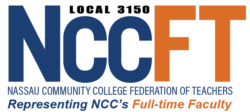Why do Americans think so poorly of our country’s public schools? This is the question Jack Schneider asks in a recent piece in The Atlantic, in which he considers the implications of what might seem a counterintuitive finding of the Phi Delta Kappan/Gallup Poll of the Public’s Attitudes Toward the Public Schools. As Schneider puts it:
Asked to assign letter grades to their children’s schools, the vast majority of parents—generally around 70 percent—issue As and Bs. If those ratings were compiled the way a student’s grade point average is calculated, the public schools would collectively get a B.
When asked to rate the nation’s schools, however, respondents are far less sanguine. Reflecting on public schools in general, a similar share of respondents—roughly 70 percent—confer a C or D. Again calculated as a GPA, America’s schools get a C or C-.
Before getting into a discussion of the reasons for these very different results, Schneider explains why understanding “this gap in perceptions” is so important. To put it plainly: policy. If the public perceives that schools are doing well, then the principle of “if it ain’t broke don’t fix it” is likely to prevail in our educational policy decisions. On the other hand, if schools are in decline, then fixing them becomes not just a good idea, but a socioeconomic and cultural imperative. That the narrative of decline is in the ascendency right now is evident from the kinds of policies for which so-called school reform advocates have pushed, from the expansion of charter schools to “value-added” measures of teacher effectiveness.
Perception of public school performance also shapes, Schneider points out, parents’ decisions about which schools to send their kids to. If people believe public schools are, overall, in decline, then families are going to end up competing for seats in a shrinking pool of schools understood to be at least adequate. This competition, obviously, will be won by those families with the most resources and, as Schneider says, there is indeed research to show that “residential segregation by income has increased in the past 20 years—driven chiefly by families with children seeking homes in “good” school districts.” He goes on, “If the average public school is of C or C- quality, this is rational behavior. But if most schools are good, segregation is being exacerbated by misperception.”
Schneider offers a couple of explanations for this gap in perception. For example, he says, people are far more familiar with their local schools and therefore more likely to rate those schools’ performance more highly than the exponentially less familiar aggregate of schools nationwide. He also points to how effective “the failing-schools narrative has been…in generating political will for federal involvement in education.” The biggest factor he suggests, however, based on research his team completed in 2015, is the widespread availability of data from NCLB and how that kind of data is used to evaluate schools.
In the study Schneider’s team conducted, two randomly selected groups were each given access to a different set of data that they could use to evaluate schools. One group used the state’s data system, which is heavily focused on test scores, while the data used by the other group were far more comprehensive, incorporating not just test scores, but a host of more qualitative measures, including how safe students felt, how strong their relationships were with their teachers, how varied the curriculum was, and the extent to which parents and community members were involved in the school. Each group was then asked to rate two different schools, one with which they were familiar and another school which the researchers assigned at random. Schneider describes the results like this:
When evaluating familiar schools, participants generally issued ratings equivalent to a B, regardless of the data system they had worked with. And when using the state’s data system to evaluate unfamiliar schools, they generally issued much lower ratings—closer to a C average. The perception gap was evident.
But something surprising happened when participants used the more comprehensive data system to evaluate unfamiliar schools: Their ratings improved significantly. Even more surprisingly, the scores they issued to unfamiliar schools almost perfectly matched the scores that had been issued by more familiar raters. The perception gap suddenly closed.
Clearly, the lens(es) through which we understand what’s going on in our public schools have an impact on whether we think those schools are doing a good job or not. A more important lesson to take from the results of Schneider’s study, though, is that we don’t just choose those lenses. We make them: a phenomenon that is also evident in the results of another poll—this one from the Pew Research Center—which found that a majority of Republicans (58%) “say that colleges and universities have a negative effect on the country,” a 13% increase over last year. That increase is something we will write more about in a future post.

One Response
I would offer two additional points:
1. Advertising works! When the media, politicians and private school promoters have the biggest megaphones and they are shouting about the “problems” with public education, the public assimilates the message.
2. The American public typically rates our Congress very poorly, however, in every election they return incumbents to office overwhelmingly. While gerrymandering has some effect on this outcome, we also see “locals” rating their own political representative higher than others do!